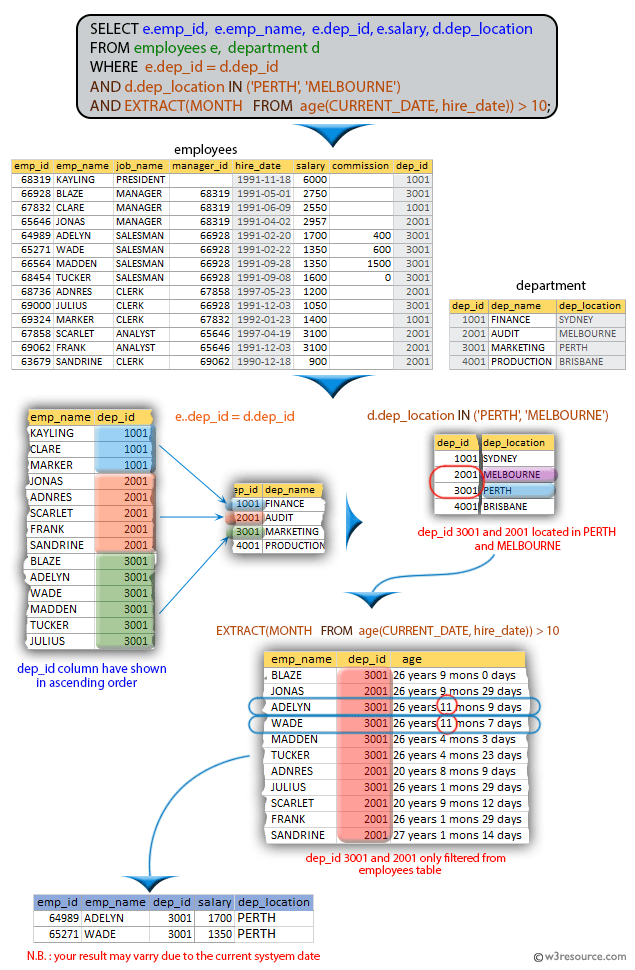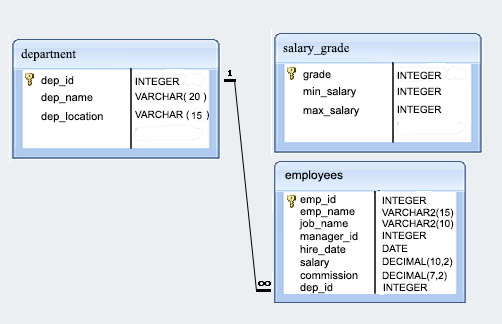SQL Exercise: List the employees at a given place for over 10 years
[An editor is available at the bottom of the page to write and execute the scripts.]
60. From the following table, write a SQL query to search for employees working in PERTH or MELBOURNE and month part of their achieved experience is more than 10. Return employee ID, employee name, department ID, salary, and department location.
Pictorial Presentation:
Sample table: employees
Sample table: department
Sample Solution:
SELECT e.emp_id,
e.emp_name,
e.dep_id,
e.salary,
d.dep_location
FROM employees e,
department d
WHERE e.dep_id = d.dep_id
AND d.dep_location IN ('PERTH',
'MELBOURNE')
AND EXTRACT(MONTH
FROM age(CURRENT_DATE, hire_date)) > 10;
Sample Output:
emp_id | emp_name | dep_id | salary | dep_location --------+----------+--------+---------+-------------- 64989 | ADELYN | 3001 | 1700.00 | PERTH 65271 | WADE | 3001 | 1350.00 | PERTH (2 rows)
Explanation:
The given query in SQL that selects the employee ID, name, department ID, salary, and department location of employees who work in the departments located in either 'PERTH' or 'MELBOURNE' and whose hire date is more than 10 months ago from the current date.
The statement joins the 'employees' and 'department' tables based on the common column dep_id.
The "WHERE" clause restricts the results to employees whose department location is either 'PERTH' or 'MELBOURNE' using the "IN" operator, and it further filters the results to employees whose hire date is more than 10 months ago from the current date using the "age" and "EXTRACT" functions. The "age" function calculates the difference between the current date and the hire date, and the "EXTRACT" function extracts the month value from the result of the "age" function.
Go to:
PREV : Analysts or managers with a salary range, no commission.
NEXT : Employees with location, salary range, and joined in 91.
Practice Online
Sample Database: employees
Have another way to solve this solution? Contribute your code (and comments) through Disqus.
What is the difficulty level of this exercise?
Test your Programming skills with w3resource's quiz.


